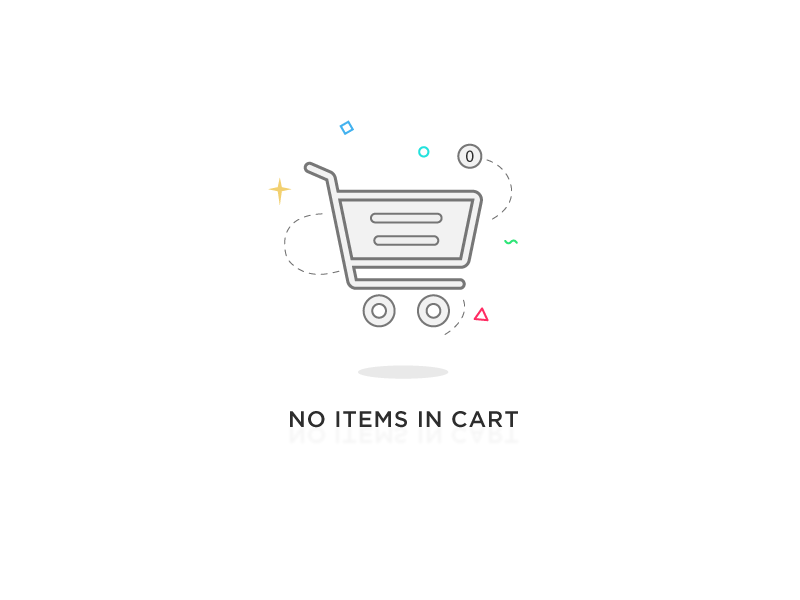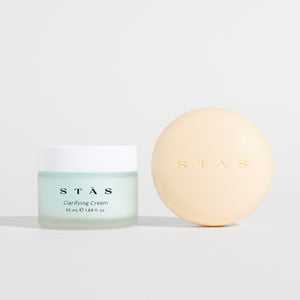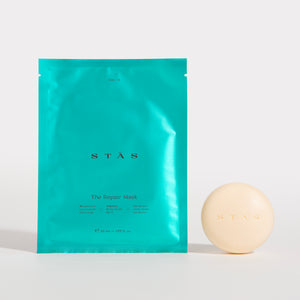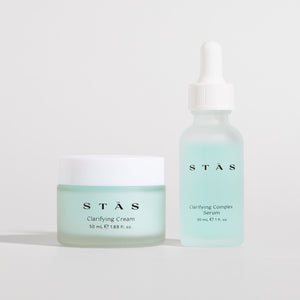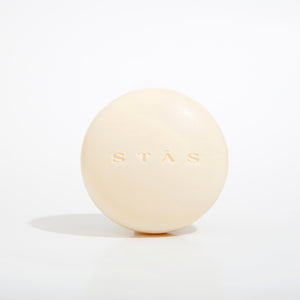Behind the Lab: Why We Don't Need Moose's Help Testing STĀS Products
Feb 18, 2025
As one of STĀS's advisors, I get to be part of some pretty cool conversations about skincare innovation. But today, let's talk about something different - specifically why my German Shepherd mix, Moose, decided to crash our last photoshoot and why that perfectly illustrates our stance on ethical beauty practices.
First things first: STĀS has never and will never test our products on animals. Not on Moose, not on bunnies, not even on those weird hairless cats that look like they've seen things. But we get asked all the time: "How do you know your products work if you don't test on animals?"
*gestures broadly at science*
Here's the thing – it's 2024, and we have so many better ways to ensure product safety and efficacy, but let's dig into some history first.
The Dark History We Need to Talk About

Why Animal Testing Became Standard Practice
Decades ago, the beauty industry relied on animal testing to determine product safety. Rabbits, mice, and even dogs were subjected to painful experiments to assess irritation, toxicity, and long-term effects. The logic? If it’s safe for them, it must be safe for humans. This practice became a legal requirement in many countries, particularly where regulatory agencies demanded proof of product safety before allowing sales.
Why It’s Still Happening in Some Markets
Despite global advancements, animal testing remains a requirement in markets for certain imported cosmetics. While some of these countries have eased regulations, allowing for alternative testing methods in specific cases, many brands still conduct animal tests to comply with legacy laws. This means some companies claim to be cruelty-free while selling in markets that mandate these tests—a frustrating loophole for conscious consumers.
The Turning Point in Modern Skincare Testing
Advancements in science and consumer advocacy have reshaped how we approach skincare safety. Thanks to new technologies, we can now test products more accurately, efficiently, and humanely—without harming animals.
Modern Alternatives That Actually Work Better
In-Vitro Testing
Instead of testing on animals, scientists use lab-grown human skin cells to assess product safety. These models, derived from donated human tissue, allow researchers to observe how ingredients interact with real skin, making this method significantly more reliable than animal testing.
Cell Culture Studies
Human cell cultures, particularly 3D skin models, replicate the structure and behavior of actual skin. These models can even simulate different skin types and conditions, allowing for tailored testing that animal experiments can’t replicate.
Advanced Imaging Technology
High-resolution imaging techniques allow researchers to observe how products interact with the skin on a cellular level. This eliminates the need for invasive animal studies while providing more detailed insights.
Computer Modeling & AI Predictions
Artificial intelligence has revolutionized skincare testing. AI algorithms can predict how ingredients will react based on vast datasets, making it possible to simulate long-term effects in a fraction of the time.
Human Volunteer Testing Protocols
Instead of harming animals, modern brands conduct clinical trials with human volunteers. Patch tests, irritation assessments, and dermatologist-supervised studies ensure product safety while providing real-world insights.
Stability Testing Methods
Advanced stability tests expose products to extreme conditions—heat, light, humidity—to ensure they remain safe and effective over time. These tests simulate how a product will perform without needing to test on animals.
Safety Assessments & Patch Testing Procedures
Dermatologists and toxicologists evaluate ingredient safety based on pre-existing data, human trials, and lab studies, reducing reliance on outdated animal testing methods.
Why These Methods Are Superior
More accurate: Human skin reacts differently than animal skin.
Better data: Modern methods provide quantifiable results, reducing variability.
More ethical: No unnecessary harm to living beings.
Cost-effective: Reduces long-term costs associated with regulatory approvals.
Faster results: AI and in-vitro models streamline testing.
More reliable for human application: Data comes from actual human skin, not unrelated species.
The Global Movement
Countries Banning Animal Testing
The European Union, India, South Korea, and several other regions have banned animal testing for cosmetics. The U.S. is making progress, with states like California, Nevada, and Illinois enacting bans on the sale of animal-tested products.
Major Brands Making the Switch
More companies are committing to cruelty-free testing, pushing for industry-wide change. Consumer demand has driven this shift, proving that ethical beauty isn’t just a trend—it’s the future.
The Future of Skincare Testing
As technology advances, alternative testing methods will become even more refined. AI, human cell cultures, and bioengineered skin models will continue to replace outdated animal experiments.
Back to Moose: A Lighter Ending

Moose remains blissfully unaware of our commitment to cruelty-free beauty. His biggest concern? Whether his treat containers have been refilled this week. But that’s exactly how it should be. Because at STĀS, the only thing we’re testing is our patience when he refuses to sit still for photos.
Additional Resources
For more information on the history and advancements in cruelty-free skincare testing, check out these sources:
The History of Animal Testing in Cosmetics - Humane Society International
https://www.hsi.org/issues/cosmetics-testing/
The Ugly History of Animal Testing in the Beauty Industry - Cruelty-Free International
https://www.crueltyfreeinternational.org/why-we-do-it/history-animal-testing
Cosmetics Animal Testing Timeline - PETA
https://www.peta.org/issues/animals-used-for-experimentation/animal-testing-timeline/
Animal Testing and Alternatives in Cosmetic Science - NCBI
https://www.ncbi.nlm.nih.gov/pmc/articles/PMC5126523/
Author: Michele Wang
